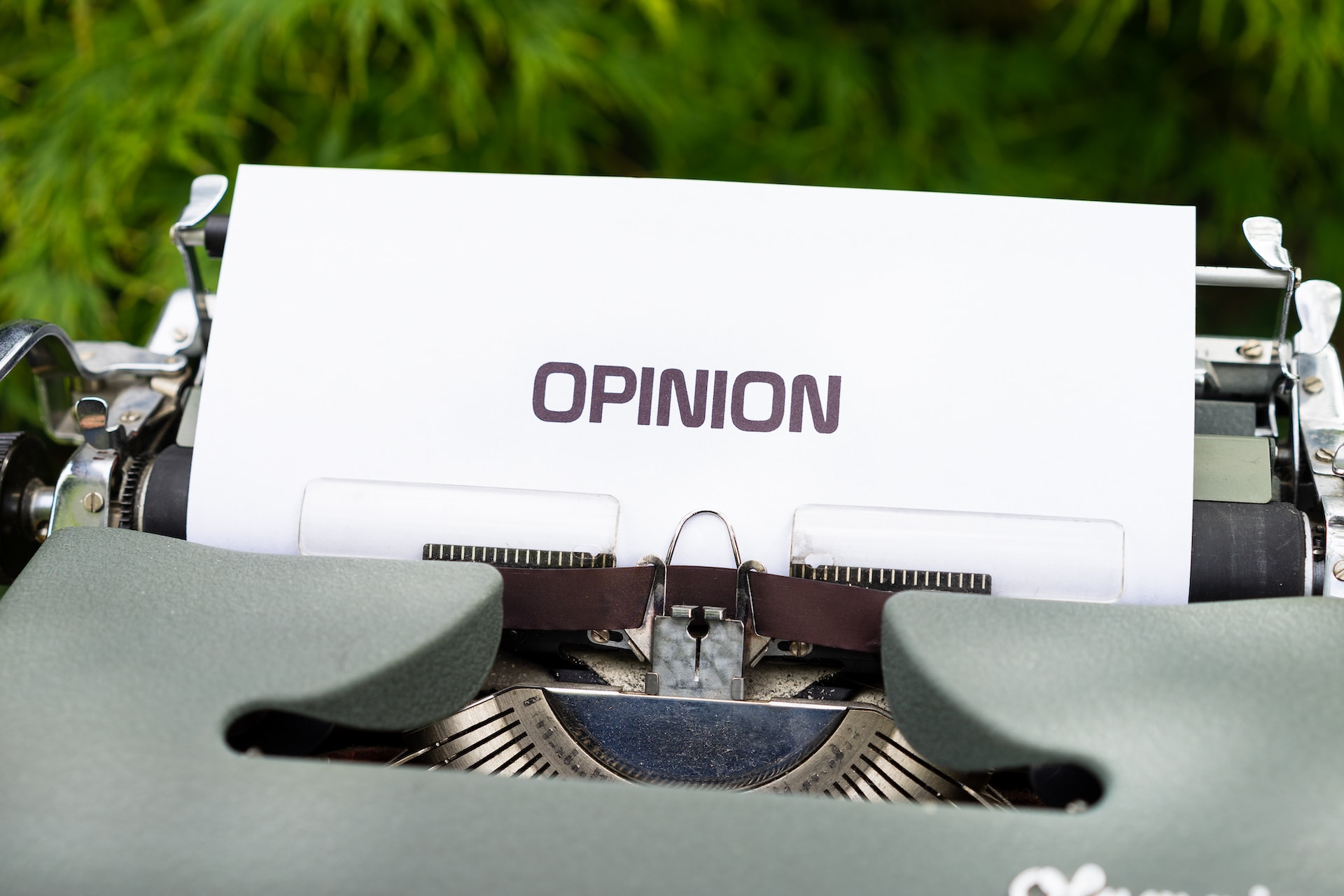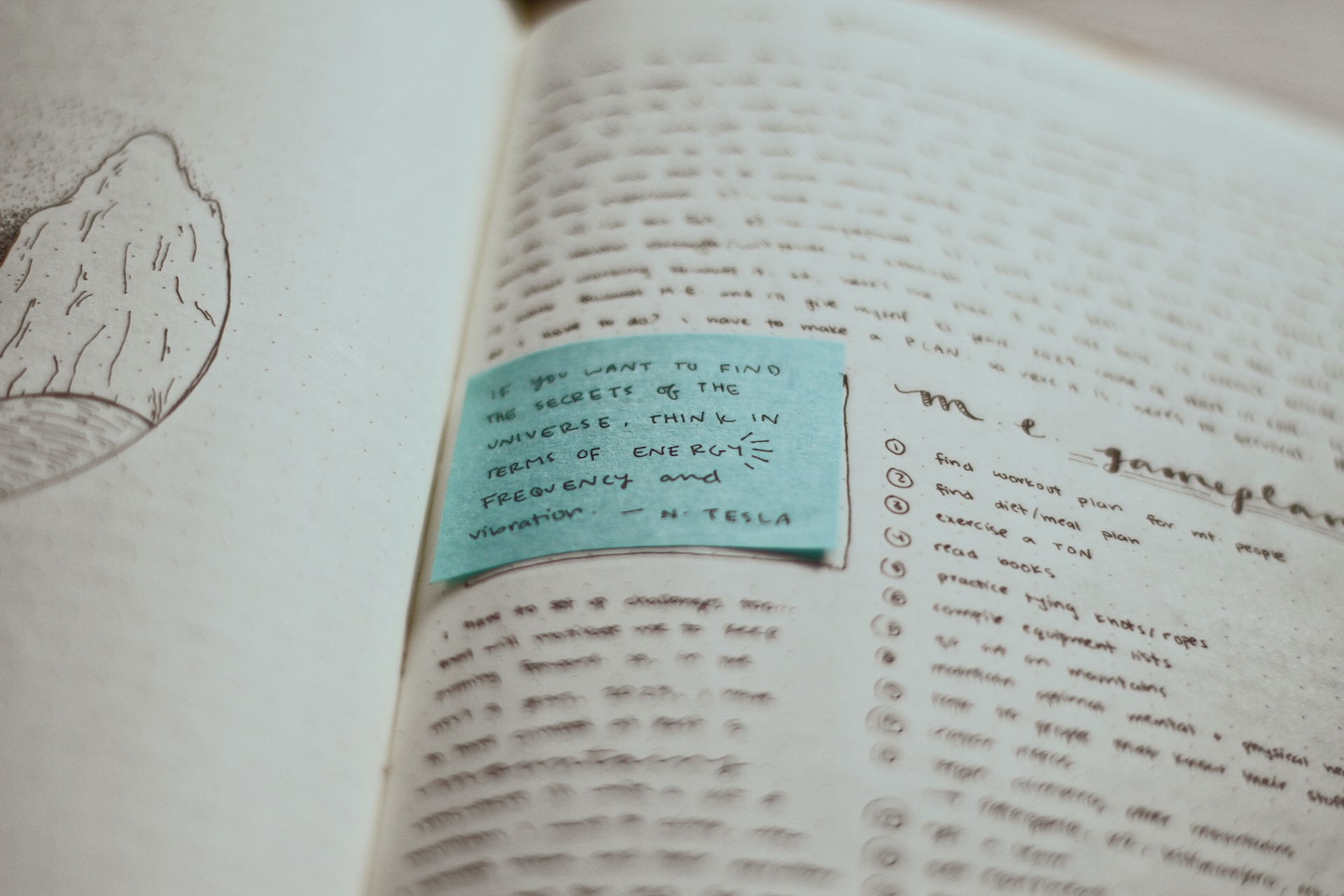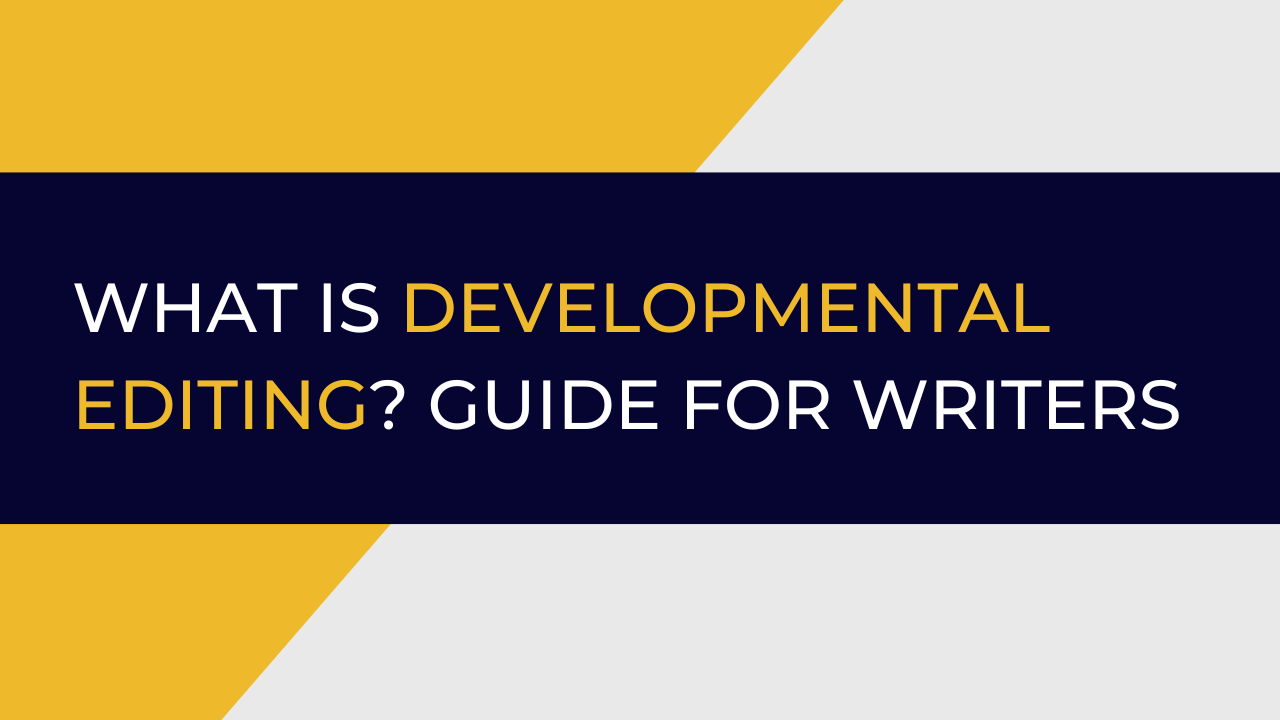What Is Developmental Editing? A Comprehensive Guide for Writers
You don’t write a book just to stack words on a page. You write to be read, understood, and remembered. But when your draft doesn’t quite land—when the story wanders, the structure shakes, or the message blurs—what do you do?
That’s where developmental editing comes in.
I discovered developmental editing the hard way. After finishing my first book, I felt proud—until I read it back. The ideas were strong, but the execution was shaky. The pacing dragged in places. Characters disappeared without reason. The ending didn’t hit the way it should. I didn’t need a spellchecker; I needed someone who could see the big picture and tell me what was missing.
Now, after writing several books and guiding over 130 clients through their manuscripts, I’ve seen the same pattern repeat itself. Most writers don’t need better sentences. They need better structure, sharper focus, and stronger foundations. They need a developmental edit.
This guide will show you what developmental editing is, how it works, and when you need it. If you’re serious about writing a book that resonates—one that sells, earns trust, or leads to a publishing deal—this is the first edit that matters.
Table of Contents
- What Is Developmental Editing?
- How Developmental Editing Fits in the Editing Process
- The Goals of Developmental Editing
- Who Needs Developmental Editing?
- Inside the Developmental Editing Process
- How Developmental Editors Shape Powerful Narratives
- Developmental Editor vs Other Editing Professionals
- How to Work With a Developmental Editor
- Where to Find a Qualified Developmental Editor
- How to Choose the Right Editor for You
- The Role of Beta Readers vs Developmental Editors
- When to Get Developmental Editing in the Writing Process
- Final Words
What Is Developmental Editing?
Developmental editing—also called substantive editing—is the phase of editing that deals with the heart of your manuscript: its structure, logic, and emotional impact.
Where proofreading corrects typos and copy editing refines grammar, developmental editing steps back and asks: Does this book actually work?
It’s about coherence, not commas.
At this stage, an editor looks at your manuscript as a whole. They analyze how well the ideas flow, whether the pacing holds attention, if characters evolve naturally, and if each chapter builds toward a satisfying conclusion. This process doesn't just improve the story—it elevates the reader’s experience.

Writers often confuse developmental editing with polishing. But polish won’t save a story that doesn’t work structurally. A great line won’t redeem a weak plot. You need to get the architecture right before you decorate the walls.
A developmental editor is your story’s structural engineer. Whether you’re writing literary fiction, a memoir, or a thought leadership book, this type of editing ensures your work delivers its message with clarity and conviction.
If you’ve heard the term “called substantive editing,” it’s because the two are often used interchangeably in the publishing world. They both refer to the same process: reshaping the content—not the surface.
How Developmental Editing Fits in the Editing Process
Developmental editing is the first serious revision step after you’ve completed a working draft. It lays the foundation for every other type of editing that follows. Without it, line editing and copy editing become cosmetic—patching cracks instead of reinforcing the structure.
Think of the editing process as a four-stage sequence:
-
Developmental Editing – You address structure, pacing, character development, and thematic clarity.
-
Line Editing – You refine style, tone, and sentence flow.
-
Copy Editing – You correct grammar, punctuation, consistency, and word usage.
-
Proofreading – You catch lingering typos and formatting issues before publishing.
Some writers attempt to reverse this order—polishing prose before the structure is set—but this wastes time and effort. Without the blueprint solidified through developmental work, every fix becomes temporary.
Another important distinction: developmental editing vs editorial assessment. An editorial assessment is a broad, high-level overview of your manuscript. It identifies strengths and weaknesses but doesn’t dive into detailed revisions. A developmental edit, on the other hand, offers a detailed roadmap for improving your manuscript—and often includes margin comments, chapter-by-chapter notes, and a full editorial letter.
Whether you're pursuing traditional publication or self-publishing, the developmental phase is where your manuscript becomes a real book. It’s where your ideas are tested, strengthened, and made ready for readers—not just critics.
The Goals of Developmental Editing (And Why They Matter for Publishing Success)
The goal of developmental editing is not perfection—it’s clarity, coherence, and connection. It’s the phase where your manuscript evolves from a collection of ideas into a purposeful, structured piece of writing that holds a reader’s attention from start to finish.
This edit ensures your book does what it’s supposed to do: resonate with your intended audience.

Whether you're writing fiction or nonfiction, the developmental editing process addresses the big-picture elements that determine whether your book works. Are the chapters in the right order? Does the argument build logically? Are the stakes clear? Do the characters behave believably and grow in meaningful ways?
These questions aren't just technical—they’re strategic.
If you’re writing a business book, for example, your intended audience expects sharp ideas and actionable frameworks. If you're writing a memoir, your readers crave emotional honesty and transformation. Developmental editors bring the outside perspective needed to assess whether your book delivers what your reader came for.
At Trivium Writing, we work with clients who are experts in their field—but not necessarily in the writing process. This is where a professional developmental editor becomes invaluable. They bridge the gap between your expertise and your reader’s experience.
The ultimate goal of developmental editing is alignment. Between your ideas and your structure. Between your voice and your message. Between what you want to say—and what readers actually hear.
Who Needs Developmental Editing? (Hint: Almost Every Writer)
Most writers believe they only need developmental editing if they’re new or inexperienced. The truth? Even seasoned authors benefit from this level of feedback—because you can’t spot the gaps in your own manuscript.
If your goal is book publishing, a developmental edit is the first serious investment that sets your project on the right track.
Here’s who typically needs this type of editing:
-
Fiction authors, including writers of young adult novels and literary fiction, who want help with character development, plot structure, and pacing.
-
Nonfiction writers, from memoirists to subject-matter experts, who need to clarify their message, organize their ideas, and keep the reader engaged.
-
Business leaders and thought leaders working on signature books or book proposals designed to lead to a book deal or drive authority.
-
Academic writers, whose manuscripts require logical argumentation, clarity, and structure.
-
Self-publishing authors, who lack the internal editing resources of big five publishing houses but still need professional oversight.
Even short stories, scripts, and children’s books benefit from developmental work. Why? Because the core principles don’t change. Story logic, emotional payoff, and audience resonance apply to every genre and length.
Here’s the rule: If you’ve finished a first draft, but you’re not sure whether your structure works, if your narrative feels flat, or if your reader will make it to the end—you need a developmental editor.
Not to fix your sentences, but to sharpen your book’s spine.
Inside the Developmental Editing Process
Developmental editing isn’t a one-size-fits-all checklist—it’s a custom, layered process that brings your manuscript into focus. It begins with an assessment of your book’s structure, clarity, and narrative flow, but it goes far beyond that.

Here’s what the process typically looks like:
-
A professional developmental editor reads your manuscript with the eye of your target reader—but also with the instincts of a structural engineer.
-
They identify major opportunities for improvement: missing pieces, flat sections, character inconsistencies, logic gaps, or pacing issues.
-
You receive an editorial letter, a detailed document outlining strengths, weaknesses, and clear suggestions for improving your book’s structure and impact.
-
Many editors also provide in-manuscript comments using track changes, giving feedback at the paragraph and chapter level.
-
Some may request a phone call or video session to discuss the manuscript’s discourse in more depth.
The goal isn’t just to critique—it’s to collaborate. Expect this process to span a few weeks, especially if the book is long-form or if you're writing outside your comfort zone. A quality developmental edit doesn’t rush. It builds.
Core Techniques: How Developmental Editors Shape Powerful Narratives
Developmental editors don’t rely on vague instincts. They use time-tested frameworks and targeted analysis to strengthen the core of your book. Here are three critical areas they focus on:
1. Character Development
Great characters aren’t born—they’re built. Editors assess whether your characters are compelling, consistent, and dynamic. Are their motivations clear? Do they evolve throughout the story? For nonfiction, this might involve turning abstract ideas or case studies into emotionally resonant stories.
Tools like character profiles and backstory frameworks help uncover blind spots. And when relationships between characters deepen, the entire manuscript gains emotional weight.
2. Plot Structuring
Whether you're using a three-act structure, the Hero’s Journey, or another framework, the plot must build tension, escalate conflict, and resolve with meaning. Editors identify weak turning points, sagging middles, or rushed endings—and help reposition key events to improve pacing and momentum.

For nonfiction authors, plot becomes the arc of your argument. Each chapter needs to move the reader forward with clarity and intention.
3. Pacing and Tension
Editors adjust rhythm like conductors. They slow down moments that need space and tighten passages that drag. Whether through sentence length, chapter flow, or thematic transitions, they ensure the reader keeps turning the page.
They also balance action and reflection—a key part of any engaging manuscript. The result? More depth, clearer vision, and a story that lands emotionally and intellectually.
Developmental Editor vs Other Editing Professionals
One of the biggest misunderstandings writers face is knowing which kind of editor they need—and when.

Here’s how developmental editing compares with other types of editing services:
Developmental Editing vs Line Editing
Line editing zooms in on language: sentence structure, rhythm, tone, and flow. A line editor asks, “Does this sentence sound right?” or “Can we say this more clearly?”
A developmental editor takes a broader view. They ask, “Does this chapter belong here?” and “Is this character arc believable?”
If line editing is about how you say something, developmental editing is about what you’re saying—and whether it’s working as a whole.
Developmental Editing vs Copy Editing
Copy editing focuses on grammar, spelling, punctuation, and stylistic consistency. A copy editor ensures your work is clean, correct, and professional.
But perfect grammar won’t fix a weak argument or a story with no climax. Developmental editors don’t polish—they reshape. Their goal isn’t surface-level readability; it’s reader impact.
Developmental Editing vs Proofreading
Proofreading is the final pass before publication. It catches typos, misused words, or formatting glitches—those last-minute errors that escaped notice.

This step assumes the manuscript is already structurally sound. Without developmental work, proofreading becomes premature polish.
Developmental Edit vs Editorial Assessment
An editorial assessment is a diagnostic—like a doctor’s check-up. It offers general feedback and recommendations but doesn’t include tracked changes or detailed coaching.
A full developmental edit is treatment. You receive an editorial letter, in-line comments, and specific action steps. It's hands-on, collaborative, and geared toward revision.
Knowing these distinctions saves time, money, and frustration—especially if you're working with different editors at each stage of the publishing journey.
How to Work With a Developmental Editor (And Get the Most Out of It)
The role of a developmental editor is pivotal in the journey of turning a manuscript into a polished, engaging story.
These professionals carry the responsibility of assessing the manuscript, providing constructive feedback, and collaborating closely with authors.
Assessing the Manuscript
Assessing the manuscript is a developmental editor's primary duty.
They look at the big picture, examining the structure, character arcs, plot development, and overall coherence of the story. This isn't about catching spelling errors; it's about understanding the heart of the narrative and ensuring it's effectively conveyed.
Working with a professional developmental editor is more than just hiring a service—it’s forming a partnership.
Here’s how to make the most of it:
Be Clear About Your Goals
Before you begin, define the purpose of your book. Who is it for? What is the transformation you want your reader to have? Knowing your intended audience helps your editor tailor feedback to what actually matters.
If you’re writing for young adult readers, the tone, pacing, and emotional beats must align with that audience. If you’re targeting executives or thought leaders, clarity and authority come first.
Stay Open to Feedback
A developmental edit isn’t validation—it’s evolution. You may hear that a favorite chapter needs to go or that your introduction buries the lead. It’s normal to feel resistance. But editing is a conversation, not a verdict.
You don’t have to take every note, but you do have to consider them carefully. Your editor isn’t trying to write the book for you—they’re helping you write the version your reader deserves.
Expect Deep, Iterative Work
Developmental editing happens over time—sometimes in multiple rounds. Your editor might focus on high-level structure in round one, then shift to refining pacing, logic, or significant structuring in round two.
There may be phone calls, asynchronous feedback, or milestone deadlines to keep the process on track.
Pro Tip: Choose the Right Match
The best developmental editors understand your genre, audience, and goals. Look for someone who’s worked with similar projects—or who comes referred by authors you respect.
At Trivium Writing, many of our clients return for multiple projects, because the relationship deepens with each collaboration.
Where to Find a Qualified Developmental Editor
Finding the right developmental editor can feel daunting—especially with so many “editors” offering different services. But when you know where to look and what to look for, the process becomes far more manageable.
Start With Books You Admire
Open the acknowledgments section of books in your genre. Many authors mention their book editor, and if the structure or narrative stands out, that editor might be a strong candidate.
This method is especially effective if you're writing literary fiction, a business book, or a memoir. Editors who specialize in your genre will understand its conventions—and know how to break them intentionally.
Tap Into Professional Networks
Organizations like the Editorial Freelancers Association (EFA) and the Independent Editors Group list vetted freelance developmental editors by specialty. These platforms also make it easier to assess experience, availability, and testimonials in one place.
Referrals also go a long way. Ask other authors in your space who they’ve worked with—or reach out to critique groups or beta readers who’ve had professional help and can make recommendations.
Explore Targeted Social Media Groups
Facebook groups focused on editing services, publishing, and writing craft often feature experienced editors looking for new clients. These spaces allow for interaction, giving you a chance to ask questions and vet them before you reach out.

Just remember: don’t hire someone based on price or personality alone. Hire based on relevance, professionalism, and results.
How to Choose the Right Editor for You
Once you’ve gathered a few names, your next step is to evaluate each editor for skill, fit, and process. Here’s how to make a smart, strategic decision:
Ask for a Sample Edit
Many editors offer a sample edit on a chapter or selection. This is your chance to see how they think, how they communicate, and whether their feedback moves your manuscript forward.
If you’re investing in a full developmental edit, this sample becomes essential. It shows you not just what they catch, but how they help you improve.
Review Testimonials and Case Studies
Don’t rely on LinkedIn blurbs. Look for professional reviews, before-and-after samples, or testimonials from authors with similar goals.
At Trivium Writing, we often work with clients writing their first book—and many of them become repeat authors. That kind of long-term relationship only happens when there’s deep trust and clear results.
Consider Genre Fit
A great editor in one genre may not translate to another. Make sure they have experience in young adult novels, nonfiction thought leadership, or whatever category you’re writing in.
Editing is contextual. Someone trained in academic editing might miss the nuance of a self-published memoir. The right editor will bring relevant insights—not just general feedback.
Build a Rapport
You don’t need to become friends, but you should feel comfortable sharing your vision, goals, and fears. This person will see your roughest work. Make sure you trust their judgment—and feel safe receiving feedback.
The Role of Beta Readers vs Developmental Editors
Both beta readers and developmental editors give feedback on your manuscript—but the quality, depth, and purpose of that feedback are worlds apart.
What Beta Readers Do
Beta readers are usually early readers from your target audience. They read your completed draft and give general impressions: what worked, what didn’t, what was confusing or exciting.
They’re useful for capturing reader reactions—but they’re not trained to identify structural weaknesses or suggest significant structuring changes. A beta reader might say, “This chapter felt slow,” while a professional developmental editor will tell you why it dragged and how to fix it.
Beta readers also lack consistency. One may love a scene another found dull. That’s fine—your audience is diverse. But you shouldn’t revise your book based on scattered, emotional responses alone.
Why Developmental Editors Are Different
A developmental editor analyzes the story or argument in context. They look at the manuscript's discourse holistically and provide structured, objective insights. They tell you what’s missing, what’s underdeveloped, and what needs to move.
They’re not guessing—they’re guiding.
A strong writing process might include both: beta readers for surface reactions and a developmental editor for foundational improvement. Just know whose feedback you should prioritize.
When to Get Developmental Editing in the Writing Process
The best time to hire a developmental editor is after your first draft—but before you start polishing the language.
At this point, the core of your book exists. You’ve captured your ideas, explored your themes, and begun shaping your narrative. But now, you need perspective. You need someone to evaluate the whole structure before you pour time into the finer details.
If you’re considering a book proposal for a book deal, developmental editing is especially crucial. Literary agents and publishing houses want a manuscript that’s conceptually sound and strategically structured. They don’t expect perfection—but they do expect clarity and coherence.
Signs You’re Ready for a Developmental Edit
-
You’ve finished a completed draft, but something feels off—and you can’t pinpoint what.
-
You’ve received feedback from beta readers, but you’re not sure how to interpret or apply it.
-
You’re transitioning from short-form writing to a book—and the structure feels overwhelming.
-
You want professional feedback that makes your book better, not just cleaner.
The earlier you work with a developmental editor, the more time you save—and the stronger your final book becomes.
Final Words on Developmental Editing
You can have brilliant ideas, vivid scenes, or industry-leading insights—but if the manuscript lacks structure, your book won’t connect. That’s why developmental editing is not optional for serious authors. It’s essential.
As a writing coach and ghostwriter, I’ve seen this firsthand. I’ve worked with over 130 authors—from entrepreneurs to academics to creatives—and every single one benefited from a developmental edit. Some needed to rewrite their introduction. Others had to restructure half the manuscript. A few had strong drafts that just needed subtle refinements.
But none of them were finished when they thought they were.
The best developmental editors don’t impose—they illuminate. They show you what your book could be if you lean in. They don’t just improve your manuscript. They sharpen your vision, raise your standard, and give you the confidence to publish with pride.
Whether you're planning to self-publish or pitch to a traditional publishing house, your manuscript deserves the strongest foundation. That starts with a real editorial partner—someone who gets your genre, respects your voice, and knows how to make your story resonate.
If you're ready to build that foundation, let’s talk.
At Trivium Writing, we help authors turn promising drafts into publishable books—with clarity, purpose, and impact.
Article by Leandre Larouche
Leandre Larouche is a writer, coach, and the founder of Trivium Writing.






